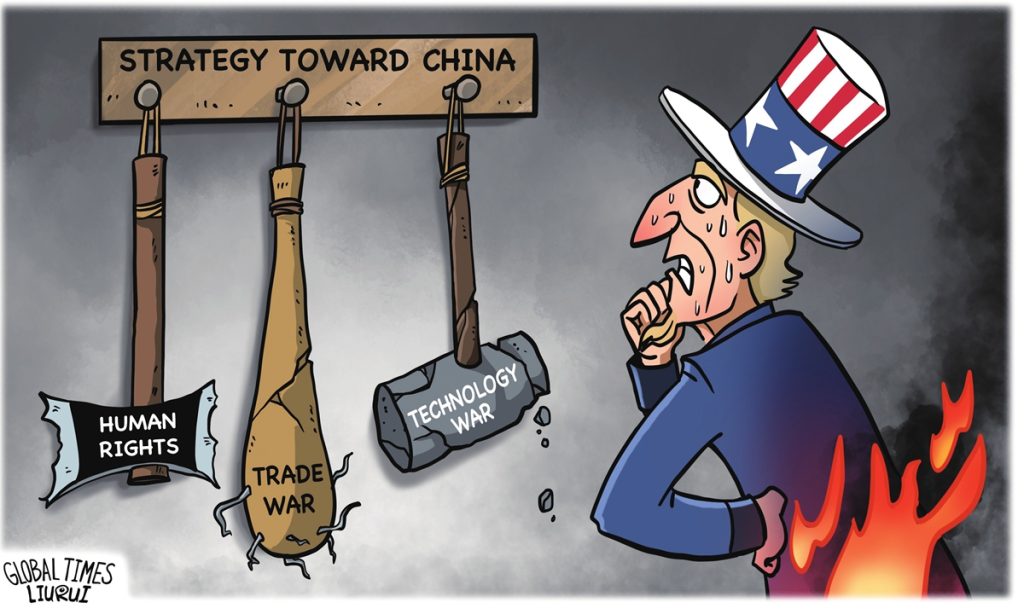Expanding industry fair creates platform for domestic and foreign manufacturing companies
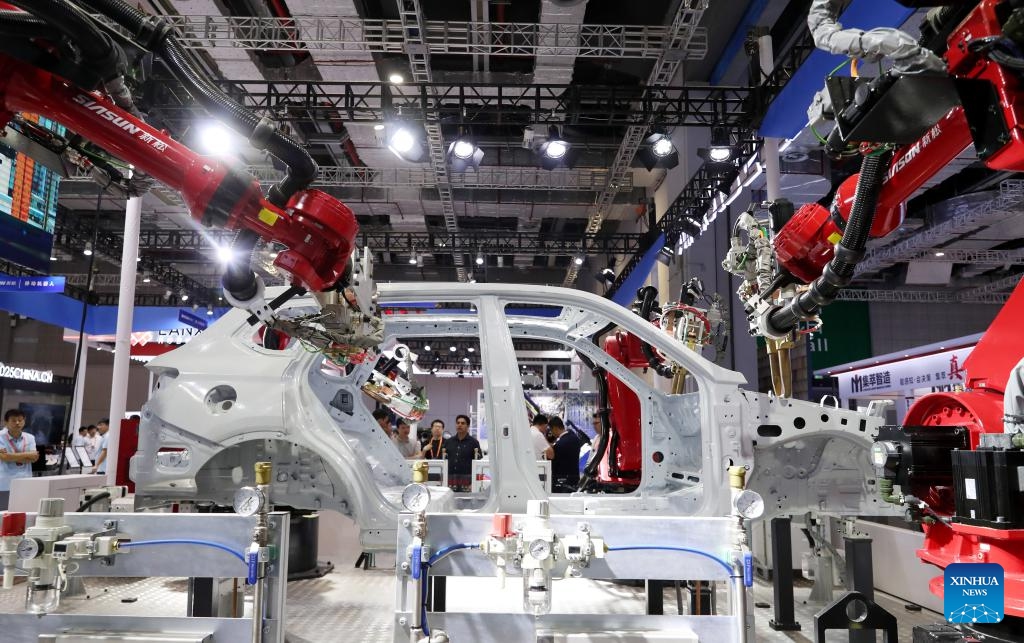
The 23rd China International Industry Fair, which drew to a close on Saturday in Shanghai, attracted over 200,500 visitors from more than 2,800 enterprises across 30 countries and regions, offering a unique platform for domestic and foreign manufacturing companies.
As a window and platform to promote global industrial economic exchange, the fair, which has now been run for 22 years, has attracted higher attendances and publicity.
The proportion of international brands participating in the exhibition has increased to 30 percent, the organizer said, according to Xinhua.
Alongside companies from traditional manufacturing powers such as the US, Germany, Japan, and Italy, there were also first-time exhibitors from Kazakhstan, Azerbaijan and Cuba. In addition, the companies from Italy have further expanded its scale, with the number of exhibitors increasing to 65, an increase of 30 percent over the same period of the previous session.
As the process of industrial digitization accelerates, technologies such as artificial intelligence and industrial Internet are reshaping the global production system.
Zhejiang Sineva Intelligent Technology Co, a tech company aiming to provide mobile robot solutions, displayed the SIBOT series of composite robots that have been recognized by customers in the semiconductor industry.
In 2023, the company has launched a variety of products such as SIBOT series composite robots and W series water tank robots, focusing on the core capabilities of precise handling, connection and transportation, and automatic loading and unloading, to help partners further improve logistics performance and production efficiency.
"We are helping customers improve the digitalization and intelligence level of production and operation links to realize 'Chinese speed'," Liu Changlun, CEO of Zhejiang Sineva, said.
At the exhibition, Schneider Electric released a white paper on the highly integrated 5G+PLC solutions together with the China Academy of Information and Communications Technology and the China United Network Communications Group Co, which are designed to explore the value arising from the connection between 5G networks and controls.
It also signed a strategic cooperation agreement with Sunshine Pumps (Tianjin) Co Under the agreement, the two parties will focus on the production and operation of high-end smart devices to explore opportunities for collaboration on digital and software solutions.
Pang Xingjian, senior vice president and head of industrial automation China of Schneider Electric, said that digital acceleration and sustainable development have become two long-term strategies that are both inseparable and complementary to each other for industrial enterprises: digital solutions underpin sustainable development, whereas sustainable development provides new stages and drivers for digital solutions.
Xin Guobin, vice minister of industry and information technology said at the opening ceremony on Tuesday that the ministry will work with other parties to foster a world-class business environment that is market-oriented, law-based, and internationalized, continuously deepen international innovation cooperation, and safeguard the security and stability of global industrial and supply chains.
China’s idea of building ‘a global community of shared future’ stands in sharp contrast to zero-sum mentality of Western countries: scholars
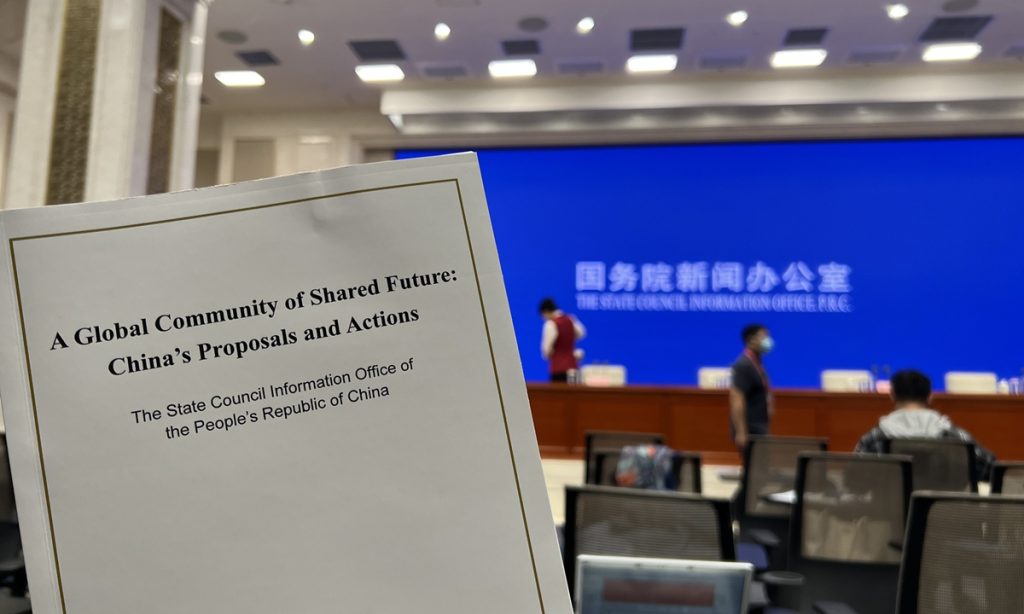
China's idea of building a global community of shared future has broken up the zero-sum mentality of certain Western countries, and illuminated a new development path for human society. It is a holistic approach that embodies China's wisdom and vision in global governance, foreign scholars said on Tuesday.
The comment comes after China on Tuesday released a white paper entitled "A Global Community of Shared Future: China's Proposals and Actions." The white paper, which summarizes the meaning of building a global community of shared future, its practices and development, is released at the 10th anniversary of China's proposal about building the global community of a shared future.
"In the past decade, globalization has seen signs of retreating, due to US-inflicted trade war, tech barrier and unilateral sanctioning, which mirrors that the West-led international order is purely based on Western interests. Against this backdrop, the global community has been in urgent need for a new governing system," Wirun Phichaiwongphakdee, director of the Thailand-China Research Center of the Belt and Road Initiative, told the Global Times.
Countries, especially the Global South, wanted to change the current system, which is unfair and disproportionate. As a result, many countries are looking at China's proposal as an engine to boost their own economic recovery by aligning with it, Maya Majueran, director of Bel t&Road Initiative Sri Lanka (BRISL), told the Global Times on Tuesday.
The implementation of the concept of building a global community of shared future has entitled individual country with equal rights to development, and make the developing world able to lift them out of poverty and genuinely participate in global governance, Wirun said.
"It shows what China says that development is an inalienable right of all countries, not a privilege of just a few countries," Majueran said. He exemplified by various China-constructed BRI projects in Sri Lanka, which has led to a huge overhaul of Sri Lankan infrastructure which had dragged down its economic development for generations. BRI also helps Sri Lanka's economic growth, job creation and people's livelihood improvement, according to him.
Wirun took note of a number of BRI projects in Southeast Asia including the China-Thailand High-Speed Railway now being built, which he said demonstrates how China and the ASEAN are working together to build a community of shared future.
According to the white paper, China's vision of a global community of shared future has gained broader support over the past decade. To date, China has constructed community of shared future in different forms with dozens of countries and regions. China-proposed Global Development Initiative and Global Security Initiative have gained public support from more than 100 countries, while the Global Civilization Initiative has also received warm feedback from many countries.
"The concept is a major public good that China has provided to the world. And it is of vital importance that China's wisdom helps build more consensus, maintain peace, and allow more countries to participate in the building of a community of shared future for the mankind," Wirun added.
Cambodia highly values economic, trade cooperation with China, says deputy PM
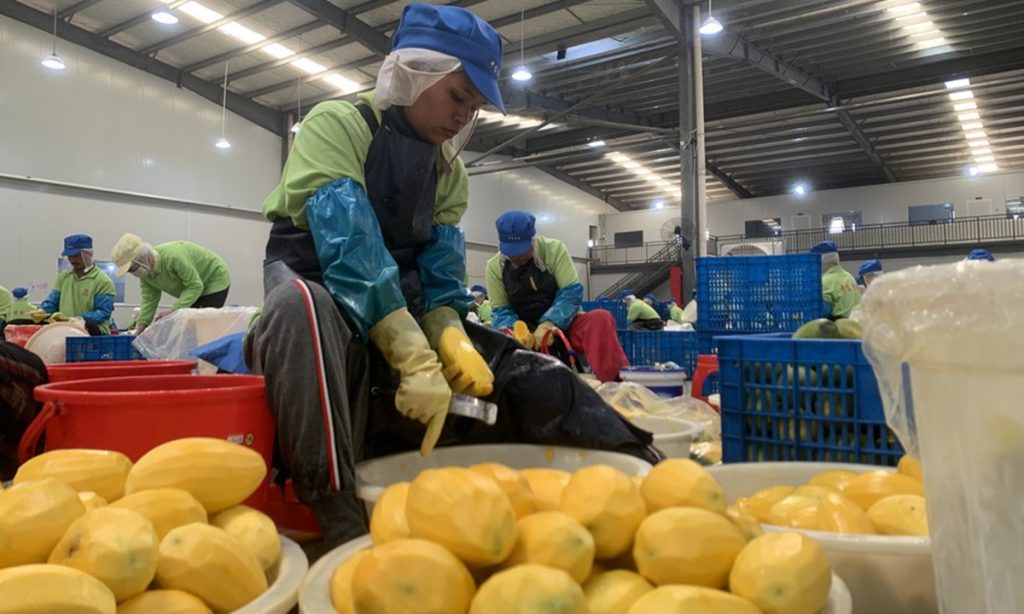
Cambodia highly appreciated the current development of economic and trade cooperation with China, Cambodian Deputy Prime Minister Aun Pornmoniroth told Xinhua in an interview on Friday.
Pornmoniroth, who is also the minister of economy and finance, said many infrastructure projects, technology transfer, and investments in Cambodia, which are a crucial source of economic growth, have been promoted under the Cambodia-China financial cooperation and the Belt and Road Initiative.
The trade volume between the two countries is increasing yearly, even with the impacts of the COVID-19 pandemic, he said. "It is believed to increase further in upcoming years."
Cambodia can export agricultural products to China directly, including bananas, mango, and longan, just to name a few, he added.
Besides, the Cambodia-China Free Trade Agreement (CCFTA) and the Regional Comprehensive Economic Partnership (RCEP) agreement, which took effect in 2022, demonstrate the commitment of participating countries to safeguarding the multilateral trading system, maintaining economic openness, and upholding a spirit of cooperation, which will, in turn, enhance socio-economic development.
"Undoubtedly, the two agreements will largely contribute to Cambodia's graduation from its status as a least-developed country in the next five years and an achievement of Cambodia's vision to become an upper-middle-income country by 2030 and a high-income country by 2050," Pornmoniroth said.
He added that the bilateral economic and trade cooperation reached another significant level during the official visit of Cambodian Prime Minister Hun Manet to China, resulting in the signing of a crucial document, namely, the action plan on building a Cambodia-China community with a shared future in the new era (2024-2028).
Also, he said both countries agreed to enhance trade facilitation to promote high-quality development of bilateral economic and trade cooperation, including making full use of the CCFTA and RCEP, promoting e-commerce cooperation, China International Import Expo, China Import and Export Fair, China-ASEAN Expo, China International Consumer Products Expo, and China International Small and Medium Enterprises Fair, among others.
Pornmoniroth said the signed action plan emphasizes the key priority areas of cooperation, such as politics, production capacity, agriculture, energy, security, and people-to-people exchanges, called the Cambodia-China Diamond Hexagon cooperation framework.
He added that the action plan clearly reflects the two countries' commitment to deepening the building of a high quality, high level, and high standard Cambodia-China community with a shared future in the new era.
China-developed new anti-COVID-19 drug approved for clinical application

A new antiviral drug used for the treatment of COVID-19 was approved for clinical application in China recently. The new drug has dual antiviral and anti-inflammatory effects, and has a wide coverage including Delta and Omicron strains, according to one of its developers Air Force Medical University of PLA.
The new drug, Meplazumab for Injection, was co-developed by Xi'an-based Air Force Medical University of PLA and Jiangsu Pacific Meinuoke Bio-pharmaceutical Co, which obtained complete independent intellectual property rights, Air Force Medical University of PLA said via its official WeChat account recently. The results of pharmaceutical studies of phase I to III clinical trials showed that the drug had good safety and was well-tolerated, and no drug-related serious adverse reactions were reported, said the university.
After treatment, the mortality rate among severe patients decreased by 83.6 percent, and the discharge rate increased by 17.3 percent, while the discharge rate of mild and ordinary COVID-19 patients was raised by 34.1 percent. Also, the rate of nucleic acid tests turning negative was lifted by 50 percent on the third day after using drugs and 100 percent on the fourth day, said its developer.
Related clinical trials have been carried out in public health centers in China including Shanghai Public Health Clinical Center, Chengdu Public Health Clinical Center and Shenzhen Third People's Hospital. The drugs were used for clinical trials for 150 mild and ordinary COVID-19 patients, and the results have showed that the rate for the patients to turn negative of COVID-19 has been increased as well as the hospital discharge rate, according to the university.
China's first domestically developed oral drug for COVID-19 treatment Azvudine, produced by Genuine Biotech Limited based in Central China's Henan Province, has set its initial price at less than 300 yuan ($44.4) per bottle. China approved Pfizer's COVID-19 pill Paxlovid and the domestic neutralizing antibody therapy BRII-196/BRII-198 for COVID-19 treatment.
China’s ‘space greenhouse’ grows more crops with improved yield, quality

With the China Manned Space Agency's announcement on Thursday of an open call for space breeding experimental projects, China's "space greenhouse" is ready to embrace the planting of more new species, as recent years have seen a significant increase in the variety of crops that have toured around space. Many of these crops have already entered ordinary households and are served on dinner tables, and space breeding is playing a greater role in contributing to China's food security.
"Staple crops and vegetable crops are the main species that have been promoted on a large scale on the ground after space breeding. They include rice, wheat, corn, peppers, tomatoes, space lotus and other varieties," Zhao Hui, secretary-general of the Space Breeding Industry Innovation Alliance, told the Global Times.
Many space-bred crops have now been planted on a large scale, Zhao said. For example, the rice seeds carried by the Shenzhou-10 manned mission have produced nearly 10 new varieties of high-quality, high-yielding rice in the past five years.
The average yield of wheat production in China is around 400-600 kilograms per mu (0.67 hectares), Zhao said, while the new variety of wheat seeds bred from the ones carried onboard the Shenzhou-10 spacecraft in 2013 will have an average yield of more than 800 kilograms per mu. The new variety of seeds is expected to be planted over an area of more than 500,000 mu from 2021 to 2023.
What's more, more than 5,000 vegetable variant strains of good quality have been bred onboard the Shenzhou series of manned spacecraft, creating over 20 new varieties of vegetables such as space peppers and space tomatoes.
The vitamin C content in space pepper is 20 percent more than ordinary ones, and they are available for market sale some 15 days earlier. The yield is also significantly improved, bringing considerable economic benefits to farmers.
In addition to staple crops and vegetables, the yield of grass and flowers and Chinese herbal seeds has also increased through space breeding.
Other than boosting yields and quality of seeds, the benefit of China's space breeding is also reflected in its contribution to the nation's food security.
The China space station, completed last year, has now entered the application and development phase. A large number of biological samples have been carried to the in-orbit station, obtaining space mutagenesis under cosmic radiation in the microgravity environment during spaceflight.
A great number of experimental materials have returned to Earth with the Shenzhou spacecraft and have been handed over to researchers for seed selection and ground breeding, the Global Times has learned. Shenzhou-14 and -15 have carried more than 1,000 crop seeds and microbial strains from over 100 institutions, and Shenzhou-12 and -13 also returned more than 1,000 seeds from 88 institutions.
"At present, whether in laboratory testing of microbial strains or experimental planting of crop materials, important mutant strains with scientific research value and application potential have been found, such as rice in South China, forage grass in Southwest China's Sichuan Province, cotton in Central China's Henan Province, and maple, fir, and red beech for forest breeding," Zhao noted.
These valuable strains will lay the foundations for the innovation of China's agricultural and forestry resources and play an important role in the development of the country's food security and ecological civilization, he said.
Space breeding has produced more than 240 varieties of staple crops in China, significantly improving crop yield and quality and increasing grain production by about 1.6 billion kilograms, the Global Times has learned. The varieties, with optimized cultivation techniques, have greatly reduced costs, bringing farmers more income.
For example, the new variety of space rice in South China can be sown directly, which avoids the transplanting process and reduces the burden on farmers.
Space mutagenesis has greatly improved the properties and quality of materials, and further expanded their commercial use.
At present, staple food crops such as rice and wheat, or space peppers, tomatoes and eggplants have all been served on people's tables. With a large number of breeding materials sent into space in recent years, more new varieties with new traits and tastes will enter the market soon in the future, enriching people's lives, Zhao said.
As for safety issues from space-bred crops that aroused public concern, Zhao said the public need not worry at all. He explained that for one thing, the introduction of exogenous or endogenous genes is not involved in the process of space mutagenesis, so it is no different from traditional physical radiation breeding; for another thing, under the protection of the spacecraft, the radiation concentration is much lower than that of traditional radiation mutagenesis, and the offspring of spaceflight breeding will not be radioactive.
"Our taikonauts on the China Space Station and astronauts on the International Space Station have all eaten space lettuce and other kinds of space-bred crops and no safety issues have ever occurred. That suggests that space-bred food is safe," Zhao noted.
Huawei completes switch from US products to in-house system in 88 overseas units
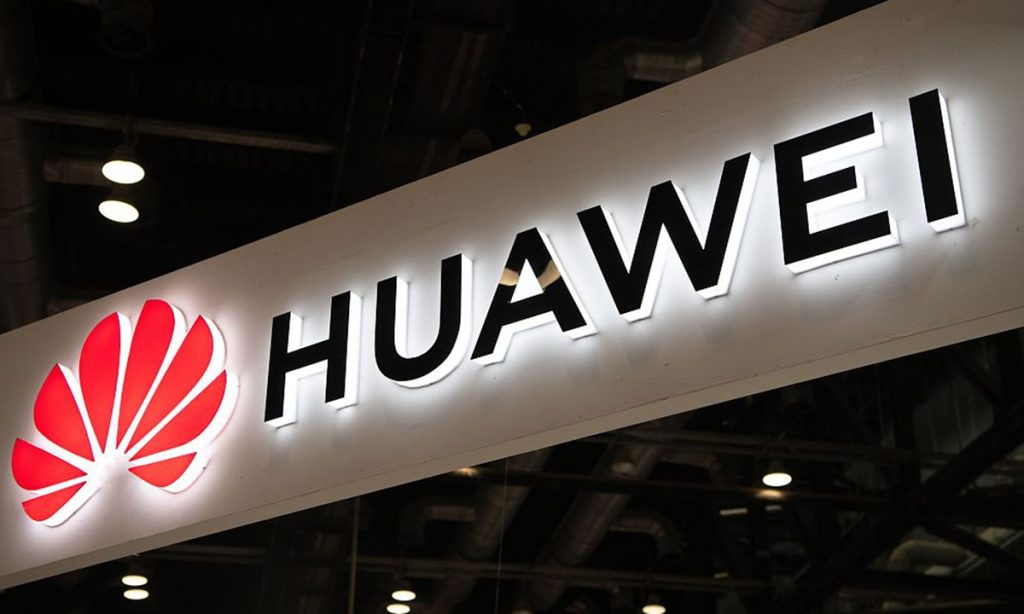
Chinese technology giant Huawei has successfully replaced internal software management systems it once sourced from US vendors with its own in-house version in 88 overseas subsidiaries, as the company continues to reduce foreign reliance amid prolonged US curbs.
According to an article published on Huawei's online community for its employees Xinsheng.huawei.com, the 88 overseas units in 75 countries were the first batch of Huawei's global branches to complete the switch to its self-developed MetaERP, covering business sectors including cloud computing, devices, and information and communication technology.
Huawei said it plans to accomplish the switchover in all of its more than 200 overseas units within the year.
ERP software is used by companies to manage key business operations ranging from accounting to supply chain management. It is widely seen as the most critical enterprise management IT system.
"The global switchover to MetaERP, and its ability to support the normal operations of Huawei's diverse lines of business worldwide, will prove to be an all-around victory," said the company.
In May 2019, the US Commerce Department added Huawei to a trade blacklist over alleged security concerns. The move has cut it off from a range of services and products, including ERP tools it largely purchased from US vendors.
Since then, the company has launched a transformation project to guarantee ERP continuity. After three years of efforts, the company successfully piloted the MetaERP system in Malaysia in September 2021, and applied it to key subsidiaries including Huawei Technologies in July 2022.
In January 2023, MetaERP successfully supported the company's yearly settlements, representing a key victory for the system.
In late April, Huawei held an internal ceremony to celebrate the switch in Dongguan, South China, attended by the company's rotating Chairperson Meng Wanzhou.
"We were cut off from our old ERP system and other core operation and management systems more than three years ago. Since then, we have been able not only to build our own MetaERP, but also to manage the switch and prove its capabilities. Today we are proud to announce that we have broken through the blockade. We have survived!" Tao Jingwen, a Huawei board member and president of the quality, business process and IT management department, said during the ceremony.
China successfully tests high-thrust engine for moon landing
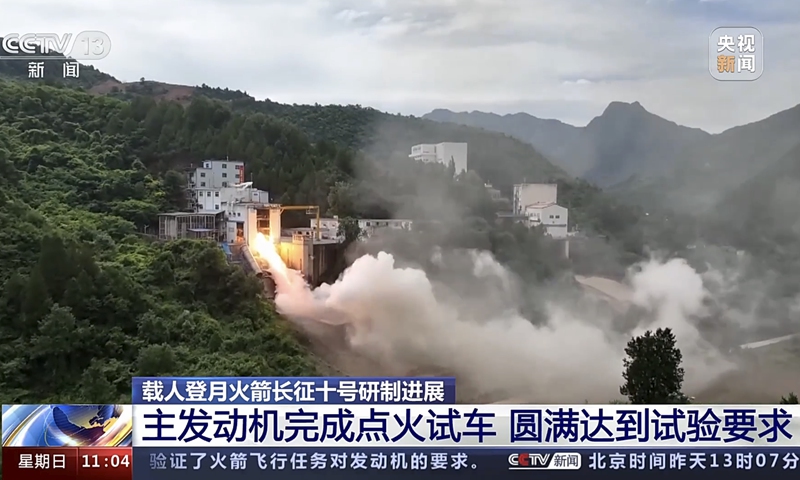
China successfully carried out a trial test on the main engine of the Long March-10, a new carrier rocket designed for manned moon landing missions, on Saturday, as the country actively makes progress on the road to realizing its goal of landing taikonauts on the moon by the year 2030.
The test assessed all the requirements for the engine, and provided strong support for the solidification for its technical state, the establishment of the technical baseline of the product and improving reliability, the Global Times learned from the China Aerospace Science and Technology Corporation (CASC) 6th Academy on Sunday.
The engine used in the test employs advanced liquid oxygen as fuel and can reach a thrust of 130 tons. It is an updated version of China's strongest active rocket engine, which has a thrust of 120 tons and is used in rockets including the Long March-5.
Although the thrust of the engine has only improved by 10 tons, the first stage of the Long March-10 will reportedly carry 21 engines. This will add another 210 tons of the thrust in total, Wang Yanan, chief editor of Beijing-based Aerospace Knowledge magazine, told the Global Times on Sunday.
Zhou Xianqi, a researcher from the CASC, told the Global Times that "the engine has met all the requirements in the Saturday test." He noted that the engine's startup, shutdown and running stability under high and low conditions have been tested, and all relevant parameters have been obtained.
During the development of the engine, many new materials, new processes and new technologies were applied. Researchers have overcome a number of key technical problems such as the sequence of the engine's start-up and shutdown, continuously changing the engine's thrust at scale, in addition to the engine's long life and improved reliability, laying a solid foundation for the engine's future development, the Global Times learned.
"In the second half of this year, we will conduct several high-altitude simulation tests to determine the relevant performance and parameters of this engine," Zhou added.
The new carrier rocket has mainly been developed for the purpose of sending spacecraft and moon landers into the Earth-moon transfer orbit, Rong Yi, a rocket expert with the CASC China Academy of Launch Vehicle Technology, was quoted as saying by the Xinhua News Agency on Saturday.
The rocket uses liquid hydrogen, liquid oxygen and kerosene as propellants. It has a total length of about 92 meters, a takeoff weight of about 2,187 tons, a takeoff thrust of about 2,678 tons, and a carrying capacity of no less than 27 tons for the Earth-moon transfer orbit, according to Xinhua.
A non-booster configuration of the new rocket is capable of conducting missions for transporting taikonauts and cargo to the space station. Its total length is about 67 meters, the takeoff weight is about 740 tons, the takeoff thrust is about 892 tons, and the low-Earth orbit carrying capacity is no less than 14 tons.
The Long March-10 serves as strategic pillar for China's aim to land taikonauts on the moon before 2030. Preparations for the maiden flight are expected to start in 2027, Rong told Xinhua.
Experts are confident that China will be able to accomplish a manned moon landing before 2030 if the Long March-10 can carry out its maiden flight in 2027, as many parts of the carrier rocket such as the engine, core module and other technical structures are upgrades from those in the Long March-5 series of carrier rockets and so have already been fully tested, according to Wang.
China revealed on July 12 that its primary plan is to carry out a manned moon landing before 2030. To achieve this goal, the country will attempt to use two launch vehicles to send a moon surface lander and manned spacecraft into lunar orbit, which will then rendezvous and dock with each other. Following this maneuver, taikonauts onboard the manned spacecraft will enter the lander.
Apart from the progress with the high-thrust engine and the Long March-10 carrier rocket, China is also actively developing spacecraft and lunar landers for the manned moon landing.
China's new-generation of manned spacecraft successfully entered orbit by Long March-5B carrier rocket and returned to Earth during tests in May 2020. Based on the new spacecraft, China is also advancing development of near-Earth spacecraft designed to accommodate four to seven crew members, building a future for space tourism.
China's lunar lander weighs about 26 tons and consists of a lunar landing module and propelling module. It can bring taikonauts down from lunar orbit to land on the moon and send them back to lunar orbit. The lunar lander is also able to conduct autonomous flight. The lunar lander will also carry scientific payloads for exploration focusing on lunar geology and lunar physics, observation, space life sciences, as well as deep drilling on the lunar surface and utilization of lunar resources, according to Xinhua.
In addition to the lunar rover, China also plans to develop a lunar mobile laboratory with large-scale mobile capability, which can realize long-term unmanned autonomous activities on the lunar surface and support taikonauts for short time stays, Xinhua said.
James Harden gets a taste of China speed selling out 10,000 bottles of wine online within seconds

The beard now feared! Visiting NBA superstar James Harden got a taste of Chinese speed with his jaw on the floor, as he sold out 10,000 bottles from his J-HARDEN brand wine within seconds during a live commerce on Tuesday night.
Harden showed up in the Chinese online celebrity CrazyXiaoyangge's livestreaming channel on Tuesday night with his personal brand J-Harden wine. Within seconds, Harden was told that 5,000 orders (436 yuan or $60 for two bottles) had been placed, meaning his 10,000 bottles were sold out at lightning speed. More than 15 million people watched the Harden live stream on Tuesday night.
Finding the China speed unbelievable, Harden shouted with excitement "no way!" Harden had to go to the computer to confirm the sales record.
Harden then added another 3,000 orders and again they were sold out within seconds.
Feeling so pumped, the NBA super star even performed a side cartwheel.
Chinese basketball fans showed much support to Harden during the livestreaming, leaving "MVP" comments all over the live stream .
Harden, in return, learned to say "woaini" - "I love you" in Chinese, to his fans during the livestreaming. And discussion on James Harden being amazed by China speed during the live commercial became trending topic on China's twitter-like Sina Weibo on Wednesday morning.
Diehard Harden fans even suggested that if the NBA star is not happy in the American basketball league, he is welcomed to joint Team China and become an influencer on the Chinese internet.
Harden, although completing a season that failed to meet expectations with Philadelphia 76ers, received broad support from Chinese fans during China summer tour, especially after he lashed out at the team's president Daryl Morey as "a liar" during a commercial event in Beijing on Monday.
"Daryl Morey is a liar and I will never be a part of an organization that he's a part of," "Let me say that again: Daryl Morey is a liar and I will never be a part of an organization that he's a part of," he said.
In October 2019, Morey then the GM for the Houston Rockets posted on Twitter a slogan used by Hong Kong rioters at the time.
He quickly drew the ire of the Chinese people and the team's Chinese fans and also triggered a backlash from business partners, including a more-than-one-year long suspension of NBA games on China Central Television (CCTV).
‘I will never go to Japanese restaurants again’: Chinese netizens concerned over Japan’s toxic dumping

As Japan began dumping nuclear-contaminated wastewater from the Fukushima nuclear power plant into the Pacific Ocean on Thursday despite strong opposition from the international community, Chinese netizens expressed their anger and concern, with a large number of netizens saying that they would no longer go to Japanese restaurants.
Affected by Japan's "forced dumping," many domestic Japanese restaurants have told media outlets that they will adjust their product lines, and seafood will be selected from domestic sources or imported from other coastal countries. Some even said that they will consider switching to other cuisines.
Experts said that Japan's dumping of nuclear-contaminated wastewater will have a clear impact on Chinese people's public opinion toward Japan. China is the largest importer of seafood from Japan, and many Chinese people are fond of eating Japanese food. The dumping will undoubtedly have a very negative impact on the national image of Japan, as well as on the safety of Japanese brands, especially food, a research fellow from the Institute of Japanese Studies at the Chinese Academy of Social Sciences told the Global Times.
In a poll conducted on Sina Weibo, more than 200,000 netizens said they would never patronize Japanese restaurants again. Many netizens living in coastal cities also expressed their anger: "We grew up near the sea, and the sea is like our mother. Japan's practice of contaminating the sea is incomprehensible and unforgivable."
Guo Fan, the director of Chinese sci-fi blockbuster series The Wandering Earth, forwarded an image from the famous manga Doraemon which said: "Dumping garbage into the sea is ill-bred." His post triggered a large number of reposts and resonance from netizens.
In addition, some netizens summed up the concept of environmental protection discussed in several Japanese animated works and television shows.
"Japanese anime is trying to promote the protection of the sea, but the Japanese government is determined to discharge sewage into the sea. How ironic!" one netizen commented.
China's famous illustration team Wuheqilin also posted a new artwork in response to the dumping. In the image, Japan is depicted as a mutated monster, symbolizing that the nation has suffered from nuclear radiation and is now unrecognizable. The artwork portrays the monster disgorging nauseating yellow pollutants into the sea, creating a disturbing image. Titled "Are You Taking Humanity Down with You, Bastard?" it quickly went viral on Sina Weibo, garnering more than 360,000 likes.
The Hong Kong SAR decided on Tuesday to ban the import of fish products from 10 cities and prefectures in Japan from Thursday, including all live, frozen, refrigerated, dried or otherwise preserved fish products, sea salt, and unprocessed or processed seaweed.
Some media outlets reported that since Hong Kong people have long been fond of sashimi, many people have criticized Japan's dumping of nuclear-contaminated wastewater as disregarding public safety, saying that they will never eat sashimi again, while also expressing that they are worried how it will affect the aquatic products of other countries if the sea becomes polluted.
According to media reports, many Japanese supermarkets in Hong Kong have already labeled their seafood with the origin of the products.
